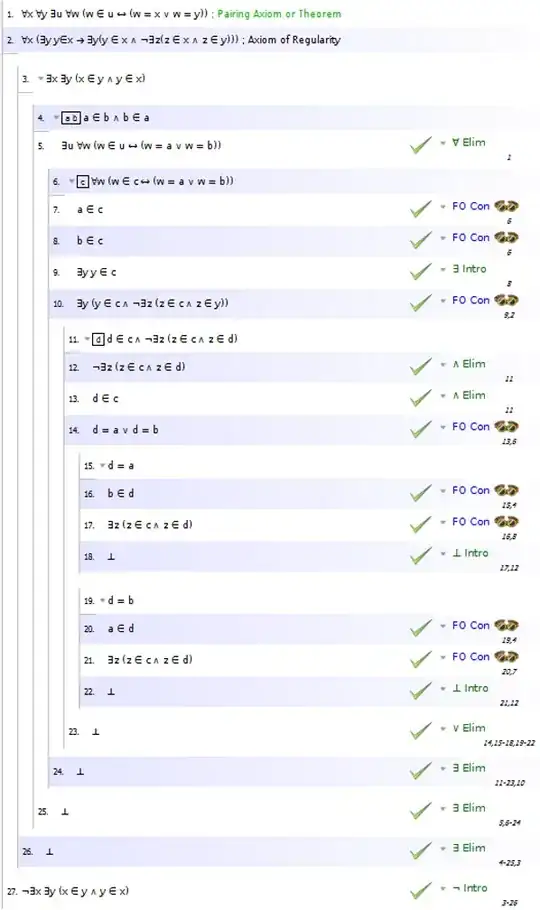I want to proof that $$\tag{*}(x\in y\land y\in x)\to\bot$$ in First-Order Logic.
Being $x\in y\land y\in x$ cyclic, it is an infinitely-descending $\in$-chain. Such a thing is excluded in ZFC by the axiom of foundation/regularity (see "axiom of foundation and infinite sets").
Here the mentioned axiom: $$\forall x \left[\exists y(y\in x)\to \exists y\left(y\in x\land \neg\exists z\left( z\in x\land z\in y\right)\right)\right],$$ or $$\forall x\,(x\neq \varnothing \rightarrow \exists y\in x\,(y\cap x=\varnothing )).\tag{**}$$
The example $x=\{y\}$ and $y=\{x\}$ satisfies (**), doesn't it?
EDIT
I would like my question to be reopened because, although the question Prove that for any two sets $A$ and $B$, $A\notin B$ or $B\notin A$ is similar in content, I would like a formal proof as is mentioned in the title (or I thought to mention by specifying FOL). It is not about understanding (the answer to the other question is perfect, actually the comment to this question was enough to understand), but about the formal proof. Thank you.
